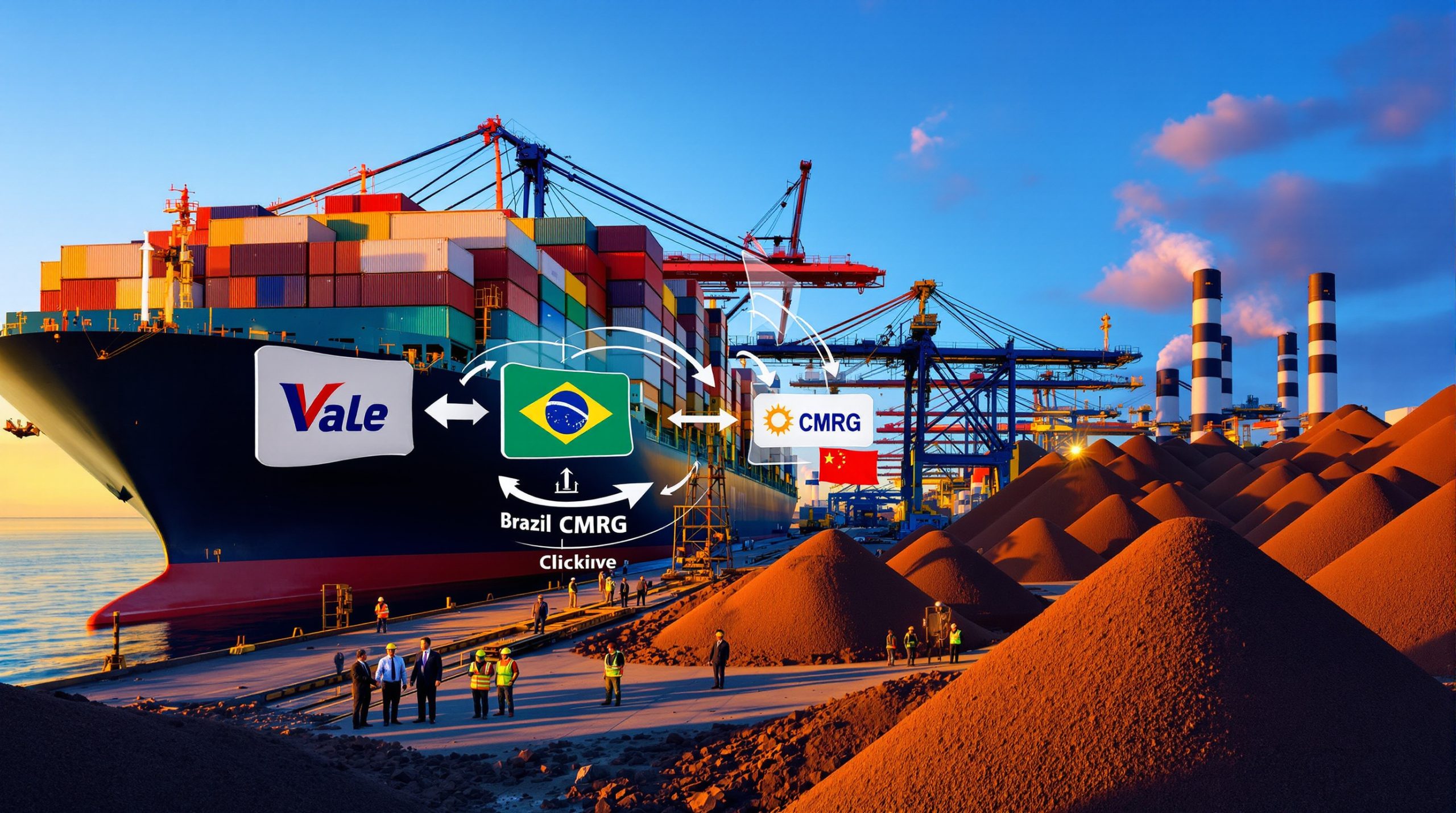Philippine Nickel Ore Market: Price Stability Amid Challenging Conditions
As the Southeast Asian nickel industry navigates through various challenges, the Philippine nickel ore market demonstrates remarkable resilience with prices holding steady despite significant headwinds. This comprehensive market analysis examines current price trends, supply constraints, and the complex interplay between Philippine and Indonesian nickel markets as they shape the global supply chain.
What's Happening in the Philippine Nickel Ore Market?
The Philippine nickel ore market presents a picture of short-term stability amid operational challenges, with pricing holding firm despite mounting pressure from multiple market forces.
Current Price Trends
The FOB (Free-On-Board) prices of Philippine nickel ore have maintained stability during recent market fluctuations, with domestic transaction prices holding steady temporarily despite downstream pressure. According to the latest Shanghai Metal Market (SMM) data, specific price points include:
- CIF price of Philippine laterite nickel ore (Ni1.3%) shipped to China: $46-47/wmt
- FOB price of Ni1.3%: $37-38/wmt
- CIF price of Ni1.5%: $59-61/wmt
- FOB price of Ni1.5%: $52-53/wmt
These figures represent a delicate balance between supply constraints and weakening demand fundamentals, with the price differential between grades reflecting the premium placed on higher nickel content in current market conditions.
Supply Challenges
Weather conditions have emerged as the dominant force disrupting the Philippine nickel supply chain:
- Significant precipitation at major loading points has created operational bottlenecks
- Continuous rainfall in key mining regions has impacted both extraction and loading progress
- Delayed loading schedules have fallen behind expectations by 5-7 days on average
- Extended shipment timelines are affecting delivery reliability to major markets
"The monsoon season's arrival has created a perfect storm of logistical challenges across Philippine nickel operations, with loading efficiency dropping by approximately 30% at major ports," notes SMM's latest market analysis.
The weather-related disruptions form part of a seasonal pattern, but their intensity this year has exceeded historical averages, creating uncertainty around near-term supply reliability.
Why Are Philippine Nickel Ore Prices Remaining Stable?
Despite supply constraints that would typically drive prices higher, Philippine nickel ore prices remain stable due to counterbalancing demand-side factors.
Demand-Side Limitations
Several factors have combined to suppress demand and pricing pressure:
- Ongoing NPI price declines have squeezed processor margins significantly
- Severe operational losses for domestic NPI smelters exceeding 15-20% on average
- Dampened sentiment for raw material purchases across the supply chain
- Weakening support from demand side for nickel ore prices
This situation has created a market standoff where neither buyers nor sellers hold clear leverage. NPI (Nickel Pig Iron) producers facing profitability challenges have reduced their raw material requirements, creating a demand vacuum that offsets supply limitations.
Market Outlook Factors
The price stability in Philippine nickel ore appears increasingly fragile due to:
- Indonesian local nickel ore price decreases creating competitive pressure
- Downstream smelters operating at financial losses across the region
- Limited willingness to purchase at current high prices from major buyers
- Potential for Philippine nickel ore prices to weaken as market forces converge
The interconnectedness of Philippine and Indonesian markets creates a situation where price movements in one region inevitably influence the other, with Indonesian price weakness potentially triggering adjustments in Philippine pricing strategies.
How Is Indonesia's Nickel Ore Market Performing?
Indonesia's nickel market presents a more dynamic picture, with divergent trends between different ore grades creating a complex market environment.
Saprolite Ore Price Trends
Higher-grade saprolite ore has experienced greater price volatility:
- Downward trend in Indonesian saprolite ore prices accelerating in recent weeks
- Mainstream premium for local laterite nickel ore: $24-26/wmt (decreased from previous levels)
- Current SMM delivery-to-factory price for local 1.6% laterite nickel ore: $50.9-54.9/wmt
- Week-over-week decrease of $2.5 in 1.6% laterite nickel ore prices
This price erosion reflects changing market fundamentals as downstream smelters push back against premium pricing amid their own profitability challenges. The higher nickel content saprolite ore, primarily used for NPI production, has faced greater price pressure than lower-grade ores.
Limonite Ore Price Stability
In contrast to saprolite ore, lower-grade limonite ore has maintained greater price stability:
- SMM delivery-to-factory price for local 1.3% laterite nickel ore: $26-28/wmt
- No change from previous week in pricing
- Greater price stability compared to saprolite ore despite similar market conditions
This price divergence between ore grades highlights the different demand drivers and end-use applications, with limonite increasingly valued for high-pressure acid leaching (HPAL) processes used in battery recycling breakthrough technologies rather than traditional NPI smelting.
What Factors Are Affecting Indonesian Nickel Ore Supply?
Indonesia's nickel supply dynamics involve both natural and regulatory factors that collectively shape market availability.
Regional Supply Disruptions
Indonesia's geographic and regulatory landscape creates unique supply challenges:
- Sulawesi and Halmahera remain the main mining regions for nickel extraction
- Frequent precipitation disrupting supply across major operational areas
- Mining and transportation processes hindered by weather-related challenges
- Potential advancement of supplementary RKAB quotas to address supply limitations
- Expected acceleration of RKAB approvals in July to normalize market conditions
The RKAB (Rencana Kerja dan Anggaran Biaya) approval process—Indonesia's work plan and budget authorization system for mining operations—represents a critical regulatory mechanism affecting market supply. The anticipated acceleration of approvals could inject additional supply into the market, potentially alleviating some weather-related constraints.
Limonite Ore Supply Situation
Limonite ore has experienced different supply dynamics compared to saprolite:
- Relatively stable supply in Sulawesi despite regional weather challenges
- Support from inventory accumulated over several months following the QMB facility incident in March
- Current supply meeting market demand for HPAL processing facilities
- Ongoing rainy season in key regions creating operational uncertainties
- Potential supply risks if weather conditions persist into Q3 beyond seasonal norms
The inventory buffer created after the QMB facility incident has provided a temporary supply cushion, but prolonged adverse weather could deplete these reserves and create tighter market conditions for limonite ore.
What's Driving Indonesian Nickel Ore Pricing Changes?
Price movements in Indonesia's nickel market reflect a complex interplay of current pressures and future expectations.
Demand-Side Pressures
Current market conditions have created significant downward price pressure:
- High operating losses for Indonesian NPI smelters creating resistance to premium pricing
- Difficulty in sustaining high premiums amid compressed processing margins
- Downstream enterprises exerting pressure to reduce premiums through purchasing behavior
- Declining HMA prices for early July indicating continued market weakness
- Further downside potential for July prices as market adjustments continue
The operating losses faced by NPI producers have created a demand vacuum for high-premium ore, with smelters prioritizing cost reduction over production volume amid challenging market conditions.
Future Demand Catalysts
Despite current challenges, several factors suggest potential demand recovery:
- Two major HPAL projects expected to commence production in H2 2025
- Potential significant boost to market demand for limonite ore specifically
- Continued demand for limonite ore for battery material production
- Higher likelihood of price increases for Indonesian limonite ore as HPAL capacity expands
The divergence between current market weakness and anticipated future demand creates a complex pricing environment, particularly for limonite ore positioned for battery material production rather than traditional stainless steel applications.
Market Analysis: What's Next for Nickel Ore Prices?
Examining both near-term indicators and longer-term trends provides essential context for market participants navigating this complex landscape.
Short-Term Price Indicators
Several factors suggest continued market pressure in the immediate term:
- Continued pressure on saprolite ore premiums from downstream profitability challenges
- Potential for further price adjustments in Indonesian market affecting regional dynamics
- Weather-dependent supply constraints creating operational uncertainties
- Downstream profitability challenges affecting purchasing behavior across the supply chain
These factors collectively suggest that price stability in Philippine nickel ore may face increasing pressure as Indonesian price adjustments and demand weakness continue to influence market psychology.
Long-Term Market Outlook
Beyond immediate market conditions, several structural factors will shape future pricing:
- Evolving supply-demand dynamics as new production capacity comes online
- Increased production capacity from new HPAL projects targeting battery material production
- Weather pattern shifts affecting mining operations in both Philippines and Indonesia
- Downstream industry profitability influencing purchasing power and inventory strategies
The bifurcation between traditional NPI production and emerging battery material applications creates divergent demand drivers that may increasingly influence pricing disparities between ore grades and qualities. Additionally, the iron ore price forecast suggests potential impacts on the broader metals market that could indirectly affect nickel pricing.
FAQ: Key Questions About the Nickel Ore Market
How are weather conditions affecting nickel ore supply?
Continuous rainfall in the Philippines and Indonesia is significantly impacting loading progress at major nickel ore loading points, causing delays in shipments and creating potential supply constraints. In the Philippines, loading efficiency has decreased by approximately 30% at major ports, extending shipment schedules by 5-7 days on average. Similarly, in Indonesia, the rainy season in Sulawesi and Halmahera has disrupted mining operations and transportation networks, with conditions potentially worsening if precipitation persists into Q3 2025.
Why are NPI smelters operating at a loss?
NPI smelters are facing severe losses due to a price squeeze created by declining NPI prices while raw material costs remain relatively high. This margin compression has resulted in operational losses exceeding 15-20% for many producers, forcing them to reduce production volumes and raw material purchases. The continued downward pressure on NPI prices coupled with the lagging adjustment in ore prices has created an unsustainable cost structure for many processing facilities, limiting their willingness to purchase ore at current market prices.
What is the difference between saprolite and limonite nickel ore?
Saprolite ore typically has higher nickel content (often 1.5-2.5%) and is used primarily in NPI production for stainless steel manufacturing. It typically commands premium pricing due to its higher metal content and suitability for traditional processing methods. Limonite ore has lower nickel content (typically 1.0-1.5%) and historically was less valued, but is increasingly used in HPAL processes for battery materials production. This emerging application has created new demand dynamics for limonite ore, contributing to its relative price stability compared to the more volatile saprolite market.
How might new HPAL projects affect the nickel market?
The two major HPAL projects expected to commence production in the second half of 2025 could significantly boost demand for limonite ore, potentially driving price increases as these facilities ramp up production. HPAL technology enables the processing of lower-grade limonite ores into battery-grade nickel sulfate, creating a new demand channel separate from traditional stainless steel applications. This technological shift represents a structural change in market dynamics, potentially creating sustained demand for previously undervalued limonite resources and altering traditional pricing relationships between different ore grades. These developments align with broader mining industry trends focusing on technological innovation and sustainability.
Disclaimer: The market analysis presented is based on current information and projections as of June 2025. Actual market developments may vary due to changing economic conditions, regulatory environments, and other factors affecting the nickel industry. Investors and market participants should conduct their own due diligence before making financial decisions based on this information.
The increasing importance of nickel in global markets is further emphasized by ongoing developments at the Tamarack Nickel-Copper Project, which represents a significant addition to North American supply capacity. Furthermore, nickel's role in the critical minerals energy transition highlights its strategic importance beyond traditional industrial applications.
Ready to Get Instant Alerts on Major ASX Mining Discoveries?
Unlock your trading edge with Discovery Alert's proprietary Discovery IQ model, delivering real-time notifications on significant mineral discoveries across the Australian Stock Exchange. Visit the Discovery Alert discoveries page to see how historic discoveries have generated exceptional returns for early investors.




